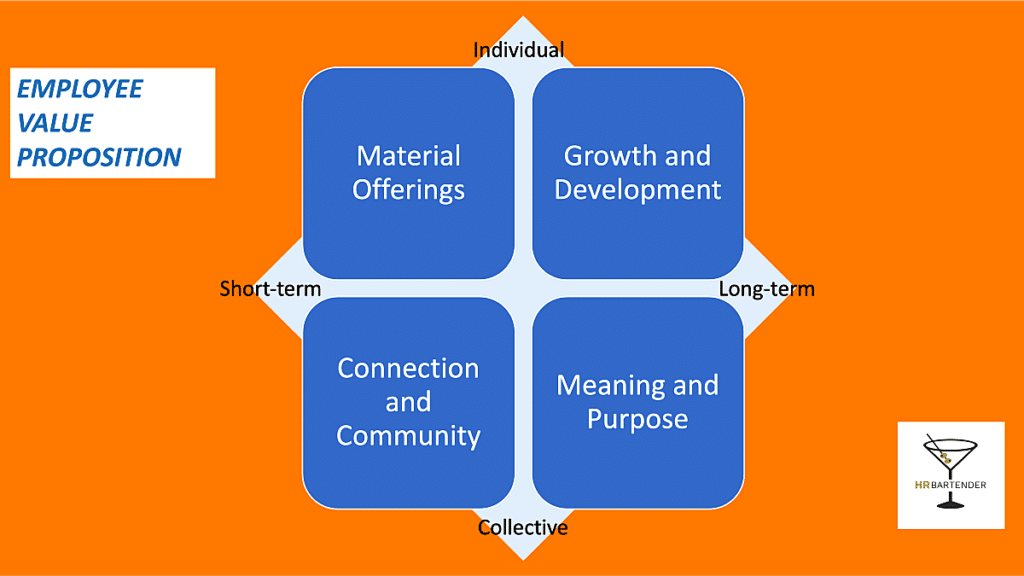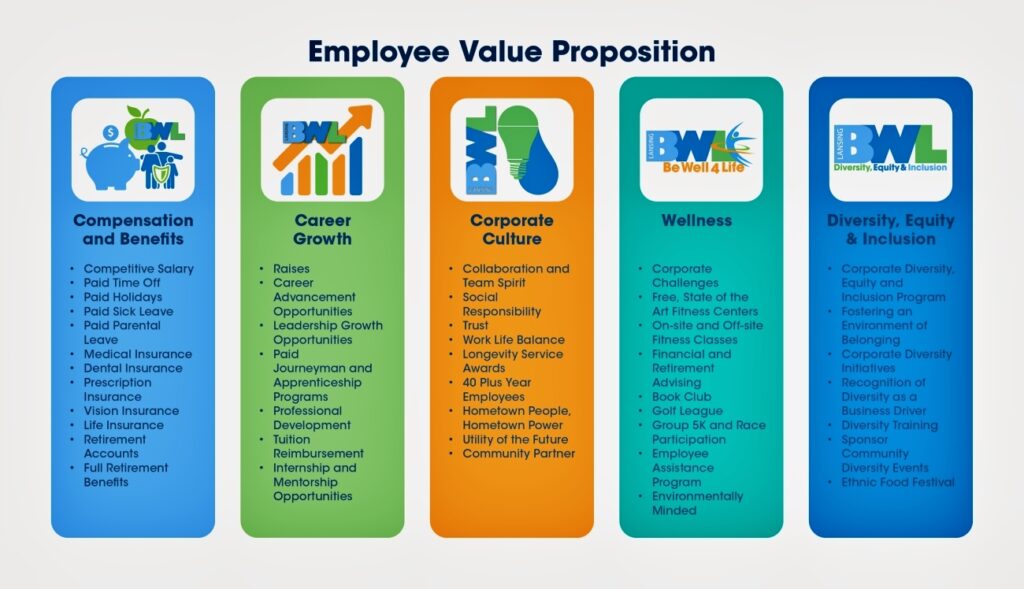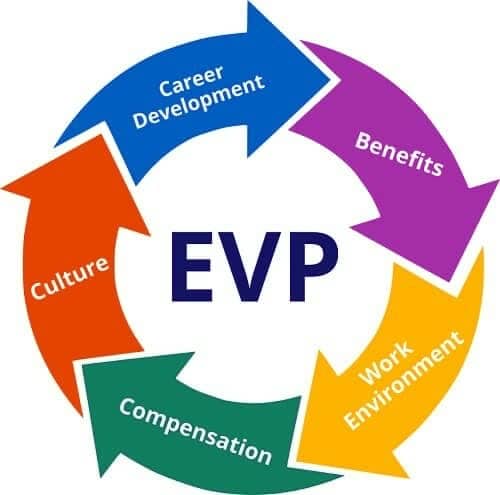The employee value proposition (aka EVP) is the aggregate of things employees receive for working at the organization. Yes, it includes compensation and benefits, but it also includes more like training, wellbeing, etc. Every organization has an EVP. The question becomes what does it look like? For example, I found this graphic on the Lansing Board of Water & Light careers website.
Here’s another one from Teare Executive Search:
While the visualizations are different, both are great examples of what is found in an EVP. They emphasize that the EVP is part of an organization’s employment brand.
I recently came across a new visual for EVP that was very intriguing and wanted to share it with you. It was in the Harvard Business Review article “How to Win the Talent War”. It reflected the EVP in more of a quadrant format (see top image).
The top image above is my attempt to offer a visual. You can see a better version of the image in this LinkedIn post from Brian Heger, global head of strategic workforce planning and talent at Bristol-Myers Squibb.
The reason that I liked this model is because it has a short-term and long-term focus. So often when we’re talking with employees about the EVP, we’re focused on right now. We have an opening right now. The candidate needs a job right now. And we forget that we also need to think long-term about employee engagement and retention. I could see the EVP model being a nice way to talk about careers with candidates.
“As a new employee, you are eligible for ….”
“After you’ve been here for XX time, then you become eligible for …”
“Some of our longest tenured employees tell us they love this benefit …”
From an assessment perspective, organizations can look at the EVP model and ask themselves, “Do we offer both short- and long-term components?”
In addition, companies can also make sure that they offer something in each of the four areas: material offerings, growth and development, connection and community, and meaning and purpose. I’ve always said that organizations don’t need to offer the biggest and best in every area. But think about the message that it would send if the company doesn’t have any growth and development components. Or if the organization can’t articulate meaning and purpose.
Regardless of what your organization is doing right now from a recruiting perspective, the organization’s employment brand is important. Which means the employee value proposition is important. Now could be a perfect time to see how your EVP looks in a quadrant model. Ensure you have a balanced offering of components that will be attractive to candidates in the short-term and career-focused employees in the long-term.
The post How to Evaluate Your Employee Value Proposition appeared first on hr bartender.





0 Commentaires